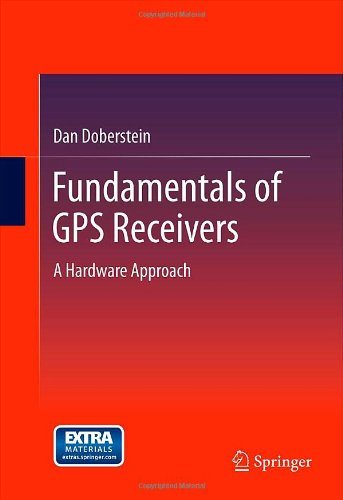

E-Books → Fundamentals of Microfabrication and Nanotechnology, Three–Volume Set Ed 3
Published by: voska89 on 1-01-2024, 22:21 |  0
0

Free Download Marc J. Madou, "Fundamentals of Microfabrication and Nanotechnology, Three-Volume Set Ed 3"
English | ISBN: 0849331803 | 2011 | 1992 pages | PDF | 67 MB
Now in its third edition, Fundamentals of Microfabrication and Nanotechnology continues to provide the most complete MEMS coverage available. Thoroughly revised and updated the new edition of this perennial bestseller has been expanded to three volumes, reflecting the substantial growth of this field. It includes a wealth of theoretical and practical information on nanotechnology and NEMS and offers background and comprehensive information on materials, processes, and manufacturing options.
E-Books → Fundamentals of Maxillofacial Surgery
Published by: voska89 on 1-01-2024, 22:21 |  0
0

Free Download Fundamentals of Maxillofacial Surgery by James W. Ferraro
English | PDF | 1997 | 347 Pages | ISBN : 1461273307 | 84.7 MB
James Ferraro, current President of the American Society of Maxillofacial Surgeons, presents this comprehensive volume on maxillofacial surgery, based on the Society's annual courses. This book will serve as an ideal introduction for residents into the field of maxillofacial surgery as well as serving as a "refresher course" for the more experienced.
E-Books → Fundamentals of GPS Receivers A Hardware Approach
Published by: voska89 on 1-01-2024, 22:20 |  0
0

Free Download Fundamentals of GPS Receivers: A Hardware Approach by Dan Doberstein
English | PDF (True) | 2012 | 331 Pages | ISBN : 1461404088 | 9.1 MB
Fundamentals of GPS receivers covers GPS receivers' theory and practice. The book begins with the basics of GPS receivers and moves onward to more advanced material. The book examines three types of GPS receiver implementations: first is the custom design by the author; second is an industry standard design, now part of the open source network; the third relates to the receiver designed by JPL /NASA. Each receiver is unique allowing the reader to see how each design solves the same problems. Chapters discuss carrier phase measurements and GPS time and frequency measurements. The overall text is measurement oriented as opposed to processing the measurements. With a focus on the fundamentals of measurements the reader will be building their intuition for the physical phenomenon at work.
E-Books → Fundamentals of Ethnic Hair
Published by: voska89 on 1-01-2024, 22:20 |  0
0

Free Download Aguh, "Fundamentals of Ethnic Hair"
English | ISBN: 3319456946 | 2017 | 176 pages | EPUB | 3 MB
Written to address the growing trend of hair loss in ethnic populations, The Fundamentals of Ethnic Hair: A Dermatologist's Perspective elucidates the science of curly hair, demystifies prevailing hair styling trends, and presents practical advice for minimizing the harmful effects of these hair styling practices. Written from a dermatologist's perspective, this textbook seamlessly blends science and practical management. Chapters include physical and chemical properties of the hair, thermal and chemical straightening, extensions, razor bumps and special cultural considerations.
E-Books → Fundamentals of Electromagnetism Vacuum Electrodynamics, Media, and Relativity
Published by: voska89 on 1-01-2024, 22:20 |  0
0

Free Download Fundamentals of Electromagnetism: Vacuum Electrodynamics, Media, and Relativity by Arturo López Dávalos , Damián Zanette
English | PDF | 1999 | 303 Pages | ISBN : 3540654488 | 27.4 MB
The bibliography on electromagnetism is very rich and it may be necessary to justify our effort in writing a new text. The present text arose as a need when lecturing about the subject at Instituto Balseiro, in Bariloche, Argentina. We wanted to have a reference text for the most important topics covered in the course, which would also cover some aspects of interest for the applications of the concepts that the students have learned. follows one in classical mechan A course on electromagnetism usually ics. In the latter a brief introduction to the theory of relativity is normally included. During courses on electromagnetism this theory is traditionally pre sented again in brief form. This approach has the effect that, unless students later work on related topics, they do not acquire an appropriate knowledge of relativity. In this way, they lose perspective of the importance of one of the most beautiful and fascinating creations of physics in the twentieth cen tury. For this reason, we consider the properties of charges, currents and electromagnetic fields in vacuum, highlighting the relativistic transformation properties of each quantity. In spite of the advantages and elegance of the co variant formulation of electromagnetism, however, we avoid overemphasizing it. It is left for Chap. 9, where we present it after having developed vacuum electrodynamics. In this way, we minimize the risk of negatively impressing those students who are attracted to more concrete problems.
E-Books → Fundamentals of Diophantine Geometry
Published by: voska89 on 1-01-2024, 22:19 |  0
0

Free Download Fundamentals of Diophantine Geometry by Serge Lang
English | PDF | 1983 | 383 Pages | ISBN : 0387908374 | 28 MB
Diophantine problems represent some of the strongest aesthetic attractions to algebraic geometry. They consist in giving criteria for the existence of solutions of algebraic equations in rings and fields, and eventually for the number of such solutions. The fundamental ring of interest is the ring of ordinary integers Z, and the fundamental field of interest is the field Q of rational numbers. One discovers rapidly that to have all the technical freedom needed in handling general problems, one must consider rings and fields of finite type over the integers and rationals. Furthermore, one is led to consider also finite fields, p-adic fields (including the real and complex numbers) as representing a localization of the problems under consideration. We shall deal with global problems, all of which will be of a qualitative nature. On the one hand we have curves defined over say the rational numbers. Ifthe curve is affine one may ask for its points in Z, and thanks to Siegel, one can classify all curves which have infinitely many integral points. This problem is treated in Chapter VII. One may ask also for those which have infinitely many rational points, and for this, there is only Mordell's conjecture that if the genus is :;;; 2, then there is only a finite number of rational points.
E-Books → Fundamentals of Differential Geometry
Published by: voska89 on 1-01-2024, 22:19 |  0
0

Free Download Fundamentals of Differential Geometry by Serge Lang
English | PDF | 1999 | 553 Pages | ISBN : 038798593X | 63.9 MB
The present book aims to give a fairly comprehensive account of the fundamentals of differential manifolds and differential geometry. The size of the book influenced where to stop, and there would be enough material for a second volume (this is not a threat). At the most basic level, the book gives an introduction to the basic concepts which are used in differential topology, differential geometry, and differential equations. In differential topology, one studies for instance homotopy classes of maps and the possibility of finding suitable differen tiable maps in them (immersions, embeddings, isomorphisms, etc. ). One may also use differentiable structures on topological manifolds to deter mine the topological structure of the manifold (for example, it la Smale [Sm 67]). In differential geometry, one puts an additional structure on the differentiable manifold (a vector field, a spray, a 2-form, a Riemannian metric, ad lib. ) and studies properties connected especially with these objects. Formally, one may say that one studies properties invariant under the group of differentiable automorphisms which preserve the additional structure. In differential equations, one studies vector fields and their in tegral curves, singular points, stable and unstable manifolds, etc. A certain number of concepts are essential for all three, and are so basic and elementary that it is worthwhile to collect them together so that more advanced expositions can be given without having to start from the very beginnings.
E-Books → Fundamentals of Demographic Analysis Concepts, Measures and Methods (2024)
Published by: voska89 on 1-01-2024, 22:19 |  0
0

Free Download Fundamentals of Demographic Analysis: Concepts, Measures and Methods by Gordon A. Carmichael
English | PDF (True) | 2016 | 405 Pages | ISBN : 3319232541 | 5.3 MB
This book offers an ideal introduction to the analysis of demographic data. Inside, readers of all quantitative skill levels will find the information they need to develop a solid understanding of the methods used to study human populations and how they change over time due to such factors as birth, death, and migration.
E-Books → Fundamentals of Dairy Chemistry
Published by: voska89 on 1-01-2024, 22:19 |  0
0

Free Download Fundamentals of Dairy Chemistry by Noble P. Wong, Robert Jenness, Mark Keeney, Elmer H. Marth
English | PDF | 1988 | 784 Pages | ISBN : 0442204892 | 85 MB
Fundamentals of Dairy Chemistry has always been a reference text which has attempted to provide a complete treatise on the chemistry of milk and the relevant research. The third edition carries on in that format which has proved successful over four previous editions (Fun damentals of Dairy Science 1928, 1935 and Fundamentals of Dairy Chemistry 1965, 1974). Not only is the material brought up-to-date, indeed several chapters have been completely re-written, but attempts have been made to streamline this edition. In view of the plethora of research related to dairy chemistry, authors were asked to reduce the number of references by eliminating the early, less significant ones. In addition, two chapters have been replaced with subjects which we felt deserved attention: "Nutritive Value of Dairy Foods" and "Chemistry of Processing. " Since our society is now more attuned to the quality of the food it consumes and the processes necessary to preserve that quality, the addition of these topics seemed justified. This does not minimize the importance of the information in the deleted chapters, "Vitamins of Milk" and "Frozen Dairy Products. " Some of the mate rial in these previous chapters has been incorporated into the new chapters; furthermore, the information in these chapters is available in the second edition, as a reprint from ADSA (Vitamins in Milk and Milk Products, November 1965) or in the many texts on ice cream manufac ture.
E-Books → Fundamentals of Cybernetics
Published by: voska89 on 1-01-2024, 22:19 |  0
0

Free Download Fundamentals of Cybernetics by A. Ya. Lerner
English | PDF | 1972 | 305 Pages | ISBN : 1468417061 | 24.8 MB
The development of science consists not only of deepening and widening the already established scientific disciplines but also depends on the emergence of new ones. The emergence and development of new sciences is influenced primarily by two factors: isolation and generalisation. Isolation of scientific disciplines is due to the discovery of new objects of investigation and the emergence of specific scientific trends. This leads to the study of a relatively narrow class of objects which are characterised by their specific approach to both the formulation and the solution of problems. Examples of this type of specific scientific diSciplines include, for instance, chemistry of high molecular compounds and the theory of electrical machines, which are both devoted to the study of a relatively narrow field. In addition there are the more general scientific disciplines, whose characteristics are that they are created for the purpose of studying such natural phenomena as occur in a very wide class of objects. Disciplines of this type are, for instance, the theory of dimensions and the theory of similarity, the theory of dynamic systems and thermodynamics. The very general, as opposed to the very specific, sciences tend by their nature to be more theoretical and depend much more on the language, mathematical or otherwise, used to describe them.



